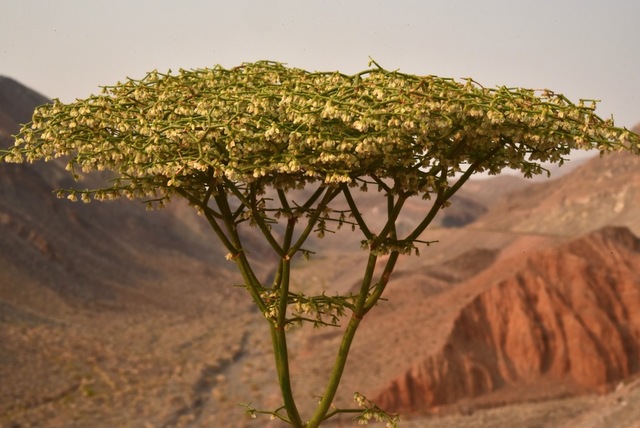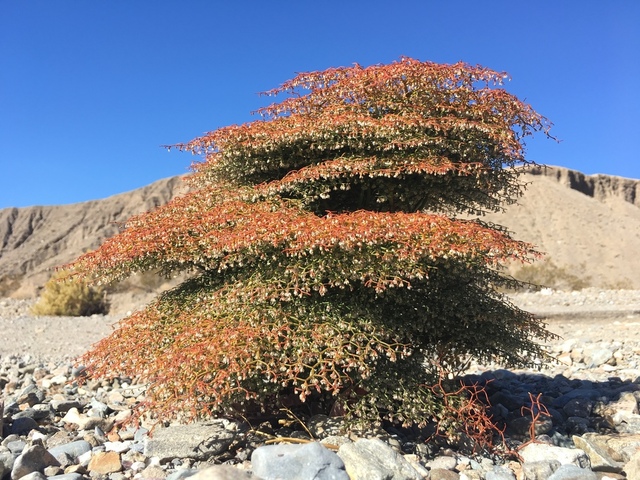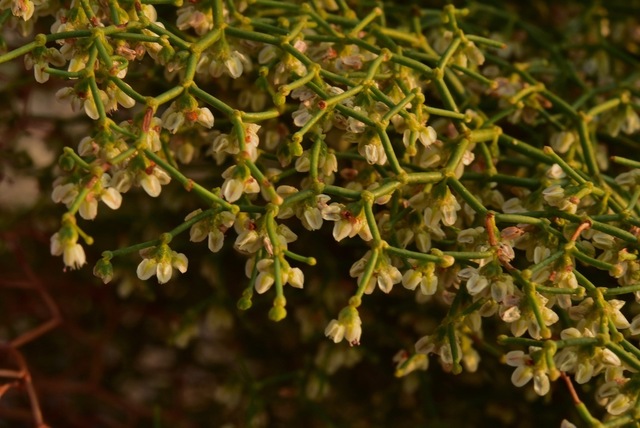Among the many wildflowers that grace the high desert landscapes of the American Southwest, there is one that stands out for its elegance and resilience — Eriogonum rixfordii, commonly known as Rixford's buckwheat. With its delicate blooms and rugged beauty, this unique plant has captivated botanists and nature enthusiasts alike, becoming a symbol of the arid, untamed world it calls home.

Eriogonum rixfordii belongs to the Polygonaceae family, a group of plants known for their adaptability to dry, harsh environments. Native to the Mojave Desert and surrounding areas, it thrives in the nutrient-poor, rocky soils where few other plants can survive. Despite the challenges of its environment — scorching heat, arid conditions, and scarce water — E. rixfordii has evolved to not just endure but to bloom with grace, adding an unexpected touch of color to the harsh desert terrain.
The plant itself is a perennial shrub, growing to a height of 1 to 2 feet. Its narrow, silvery-green leaves create a soft contrast to the dry, dusty earth, while its distinct flower clusters rise from stout, erect stems, resembling towers of delicate lace. These flower clusters, ranging from soft yellow to pale pink, bloom in late spring to early summer, creating a vibrant spectacle against the backdrop of the desert's rocky hills and vast, open skies.

Like many plants of the desert, Eriogonum rixfordii is a study in resilience. Its roots extend deep into the soil, seeking out water reserves hidden beneath the surface. The plant’s greyish foliage reflects the harsh desert sun, minimizing water loss while providing shelter to small desert creatures. The flowers, though small, are packed in dense clusters, attracting pollinators, particularly bees and butterflies, that play a crucial role in ensuring the plant's reproduction.
Rixford's buckwheat is not just a beauty of the desert; it is a survivor, a symbol of the harsh yet poetic nature of the Mojave’s ecosystem. With its deep-rooted persistence and ability to thrive where others fail, this plant speaks to the strength of life even in the most inhospitable of environments.
The plant is named in honor of Rixford, a place near Barstow, California, where it was first discovered. It was in the late 19th century that botanist Lloyd H. Shantz identified and classified the species, noting its unique characteristics and rarity. Eriogonum rixfordii is not widespread, and its range is confined to the rocky hillsides and mesas of the Mojave Desert. This limited distribution makes it a rare sight, which only adds to its allure for those who venture into its native habitats.
Over the years, Eriogonum rixfordii has become an important part of the local ecosystem, providing sustenance for wildlife and contributing to the biodiversity of the Mojave Desert. It stands as a testament to the desert’s ability to nurture life, even in the harshest of climates.

Though Eriogonum rixfordii is relatively resilient, it is still vulnerable to the very forces that shape its world. Habitat destruction due to urbanization, mining, and road construction has encroached on its natural home, reducing the space where it can flourish. Climate change, too, presents a growing threat, altering the delicate balance of the desert ecosystem.
Conservation efforts are underway to protect this remarkable plant and its habitat. Botanists and environmentalists are working to preserve the Mojave Desert’s fragile beauty, ensuring that plants like Eriogonum rixfordii continue to thrive in their natural environment for generations to come. Preserving the Mojave is not just about saving a single species; it’s about safeguarding an entire ecosystem that supports a diversity of life.
Eriogonum rixfordii is a plant that embodies the beauty of the desert: understated, resilient, and profoundly graceful. It is a reminder that life, in all its forms, can thrive even in the most challenging of conditions. The towering flowers of E. rixfordii stand as quiet sentinels in the desert, an enduring symbol of the Mojave’s unique flora and the delicate balance of life that it supports. For those who are fortunate enough to witness its bloom, Eriogonum rixfordii is a moment of serene beauty in the harsh, stunning landscape of the American Southwest.
As long as the desert winds continue to blow and the sun scorches the rocky soil, Eriogonum rixfordii will persist, a living testament to the desert’s raw beauty and its unyielding capacity for life.
animal tags: Polygonaceae
We created this article in conjunction with AI technology, then made sure it was fact-checked and edited by a Animals Top editor.